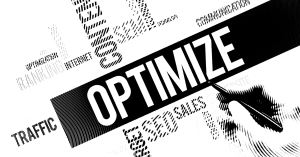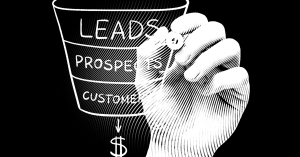
Optimizing buyer enablement
Optimizing buyer enablement You may be wondering how to entice customers to buy your product. There are a few key things you can do to
The way we sell products and services is changing. The traditional model of selling, where businesses push their products and services onto customers whether they need or want them, is becoming less and less effective.

Mads Winther

Instead, a new model of selling is emerging, one that is focused on the needs and wants of the customer. This buyer-centric approach to selling is more effective, and it is the future of selling.
In a buyer-centric model, businesses put the needs of the customer first. They take the time to understand what the customer wants and needs, and then they tailor their products and services to fit those needs. This approach leads to happier customers and more sales.
There are a few key things that businesses need to do to be successful in the future of selling. First, they need to focus on creating a great customer experience. Second, they need to use data and analytics to understand their customers better. And third, they need to be flexible and agile in order to respond quickly to changing customer needs.
The future of selling is buyer-centric. Businesses that focus on the needs of their customers will be more successful than those that don’t.
If you don’t focus on the needs of your customers, you’ll likely see a decline in sales. As the traditional model of selling becomes less and less effective, businesses that don’t adapt will be left behind.
So what are you waiting for? Start putting your customers first today!
One of the most important things you can do in a buyer-centric model is to segment your customers. Segmentation allows you to understand your customers better and tailor your products and services to their specific needs.
Without segmentation, it’s difficult to understand who your ideal customer is and what they need from you. As a result, you’ll likely end up selling them products and services that they don’t actually need or want. This will lead to unhappy customers and lost sales.
There are a few different ways you can segment your customers. The most common approach is to segment by demographics, such as age, gender, location, etc. Another approach is to segment by behavior, such as purchase history or how they interact with your product.
The best way to segment your customers is to use a combination of both demographic and behavioral data. This will give you the most comprehensive understanding of your customer base and allow you to tailor your products and services most effectively.
Once you’ve segmented your customers, you can start to focus on their specific needs. This will allow you to create a more personalized customer experience and increase sales.
The future of selling is buyer-centric. Segmentation is a key part of this model, and businesses that use it will be more successful than those that don’t.
Once you've segmented your customers, you can start to focus on their specific needs. This will allow you to create a more personalized customer experience and increase sales.
There are many benefits of a segmentation approach.
First, it allows you to understand your customers better. By segmenting your customers, you can get a more detailed picture of who they are and what they need.
Second, it allows you to tailor your products and services to their specific needs. This leads to happier customers and more sales.
Third, it’s more flexible and agile. You can respond quickly to changing customer needs if you’re not locked into a one-size-fits-all approach.
If you want to be successful in the future of selling, you need to segment your customers. This will allow you to understand their needs and tailor your products and services accordingly.
There are many benefits of a buyer-centric model. First, it leads to happier customers. When you focus on the needs of your customers, they’re more likely to be satisfied with their purchase. Second, it’s more effective than the traditional model of selling. You’re more likely to make a sale if you tailor your products and services to the needs of the customer. And third, it’s more flexible and agile. You can respond quickly to changing customer needs if you’re not locked into a one-size-fits-all approach.
If you want to be successful in the future of selling, you need to focus on the needs of your customers.
The buyer-centric model is going to have a significant impact on B2B sales. In the past, B2B sales have been focused on the needs of the business, rather than the needs of the customer. This is changing, and businesses are starting to focus on the needs of the customer. As a result, B2B sales are becoming more customer-centric.
One of the most important things you can do in a buyer-centric model is to segment your customers. Segmentation allows you to understand your customers better and tailor your products and services to their specific needs.
A Sales Playbook is the go-to tool for you and your sales team when you want to built and implement a repeatable, scalable, and profitable sales motion

Optimizing buyer enablement You may be wondering how to entice customers to buy your product. There are a few key things you can do to

Developing a sales pipeline Sales pipelines are often thought of as being exclusively for sales teams, but the truth is that they can be just

The future of B2B sales is hybrid As the world of business evolves, so too does the way that companies sell to one another. In

The Playbook House ApS – Solbakken 38 – 9210 Aalborg SO – Denmark – CVR DK43114611
Copyright © 2022 The Playbook House ApS. All rights reserved